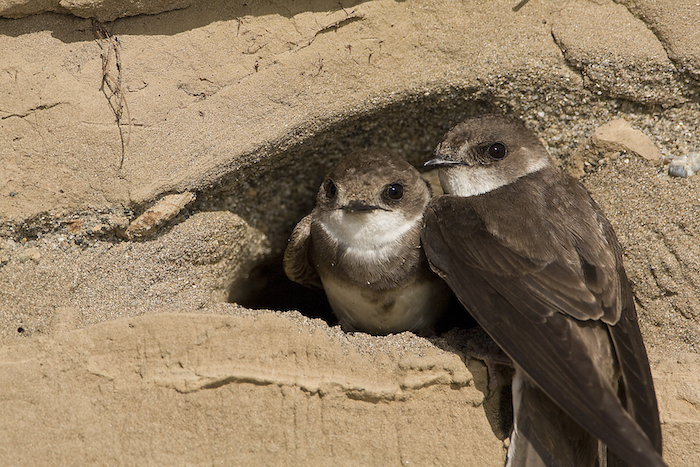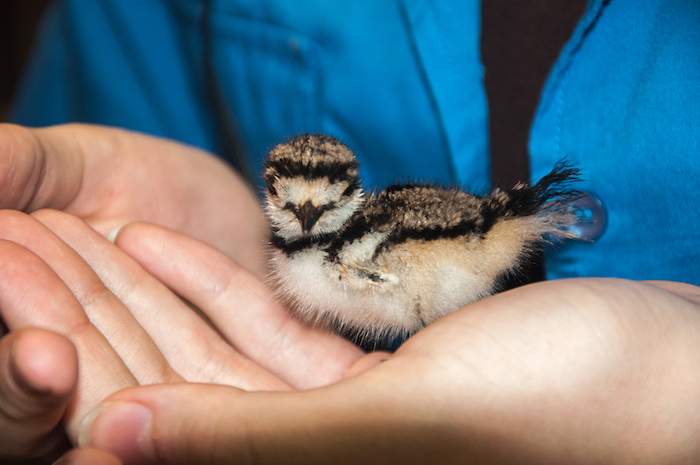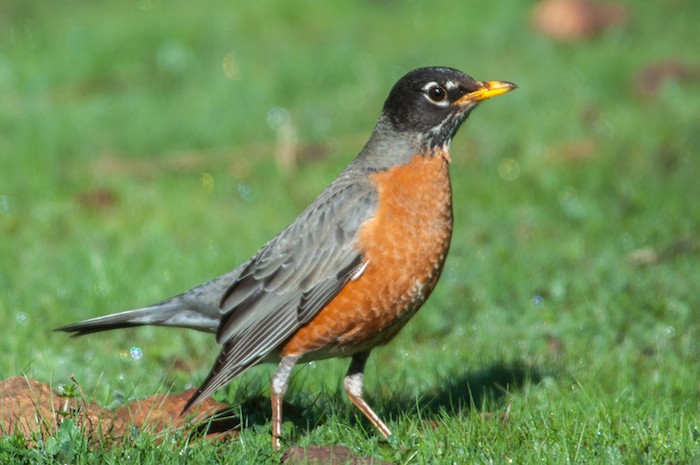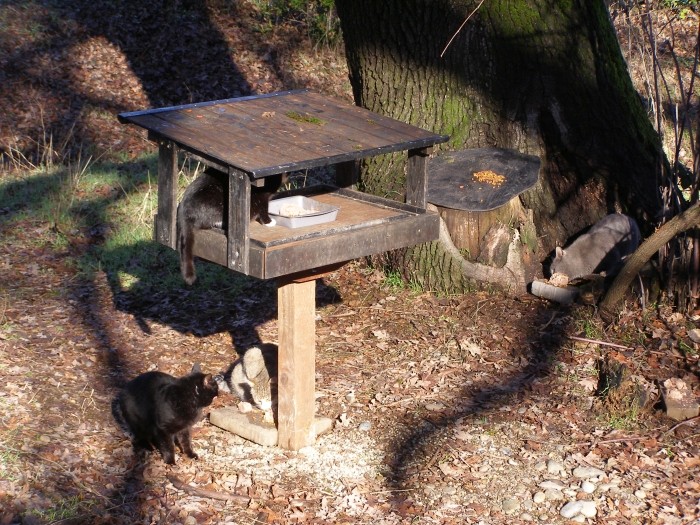
Mama bank swallow and her chick gaze out over the Sacramento River from their cliff-bank burrow – photo courtesy of David Bogener
Spring is in the air and birds are in the creative construction business. The homes they build, where they will lay and incubate their eggs and raise their young, come in many styles, shapes, and sizes.
The simplest is almost nothing – a mere scrape on the ground such as the Killdeer use—and is abandoned as soon as the eggs hatch and the precocious babies follow their parents and pick up their own food. More complicated is the floating platform, such as the rafts that Pied-billed Grebes construct on local ponds, allowing these swimmers to live their entire lives without ever setting foot on land.
Simple elevated nests are the familiar cups that many songbirds such as the beloved American Robin build in bushes and trees. A robin’s sturdy home is formed with twigs, then cemented with mud– so if you see a female robin with mud on her chest you can bet that her nest is nearby. Robin babies hatch blind, naked, and helpless, so she lines the nest with grass to make a soft cradle for the nestlings in the weeks that their parents fly food to them. Even after the young fledge, the parents continue to feed them for some time.
Bird nests are unique to each species, so the builder of an old abandoned nest can often be identified by the materials, size, placement, and other construction features of the nest. There’s no confusing the tiny, dainty hummingbird’s nest, woven of moss and spider webs, with the massive stick-built home of the Bald Eagle! I once observed a Bald Eagle in Seattle land on a sizeable tree branch and keep on flying, snapping the branch and heading off toward the nest the pair was constructing – no picking up old sticks from the ground for this mighty bird!
Many birds are cavity nesters, using holes in trees that they have chiseled out themselves or reused after the original makers have moved on. All of the woodpeckers excavate their own cavities, although sometimes even they will start housekeeping in a provided nesting box.
To a certain extent we can select nesting box tenants by sizing the hole in the birdhouse. Entrances up to 1 ¼ inch round will admit wrens, titmice, and nuthatches. Bluebirds and tree swallows will use 1 ½ inch doorways. Larger holes will invite the nonnative European starlings, and so are not advised.
Unusual cavity nesters are the Belted Kingfishers, who dig long tunnels in river banks to house their eggs and chicks, and the Bank Swallows, who seem to use their burrows in courtship. The males dig two foot tunnels into a riverbank cliff, and the females check the sites out before selecting a package deal of mate and burrow. Their cousins, the Northern Rough-winged Swallows, will similarly burrow or can be seen nesting in the weep-holes of the concrete Bella Vista water intake downstream from the Sundial Bridge.
The master architects of the local bird world build complex nests such as the hanging basket of the Bullock’s Oriole. The Bushtit builds a woven construction more like a long sock with a tiny entrance hole up above the ankle. When the parent birds come to feed their chicks, the sock does the shimmy as the babies eagerly take their meal.
So, enjoy the season and the beauty of its diverse lives and homes! With your eyes open maybe you will see a bird carrying a piece of material to line its nest, and you’ll know that parent birds are preparing to raise their young ones!
Article by Linda Aldrich



